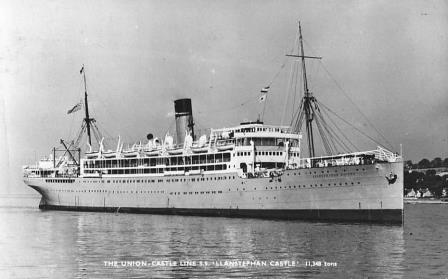
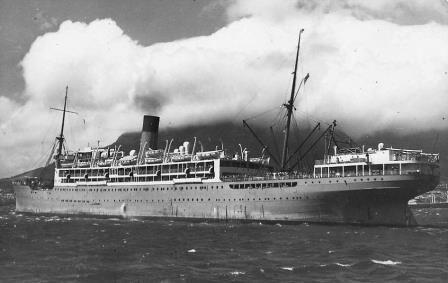
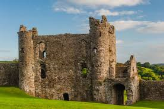
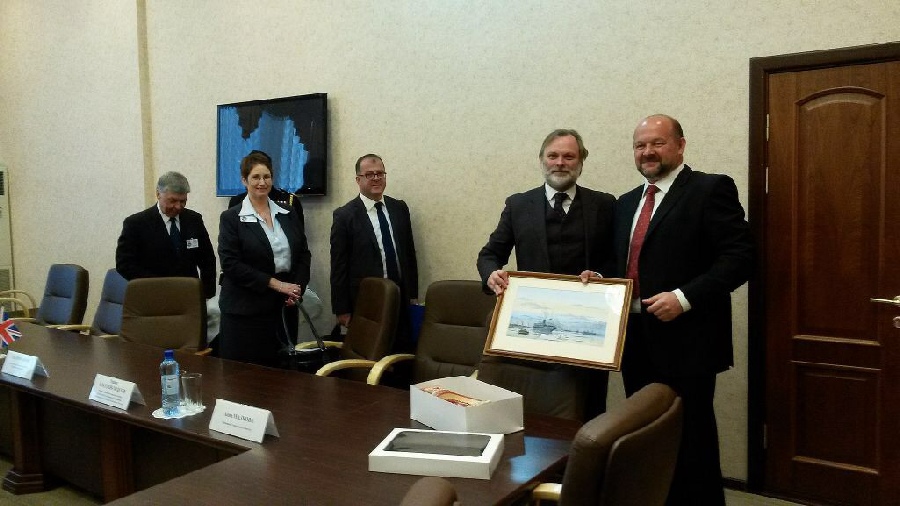
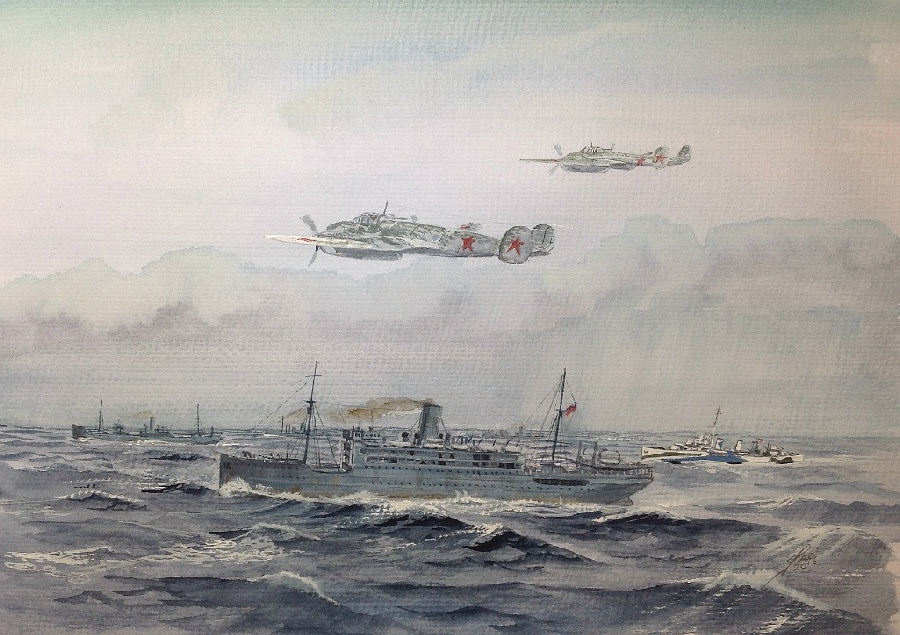
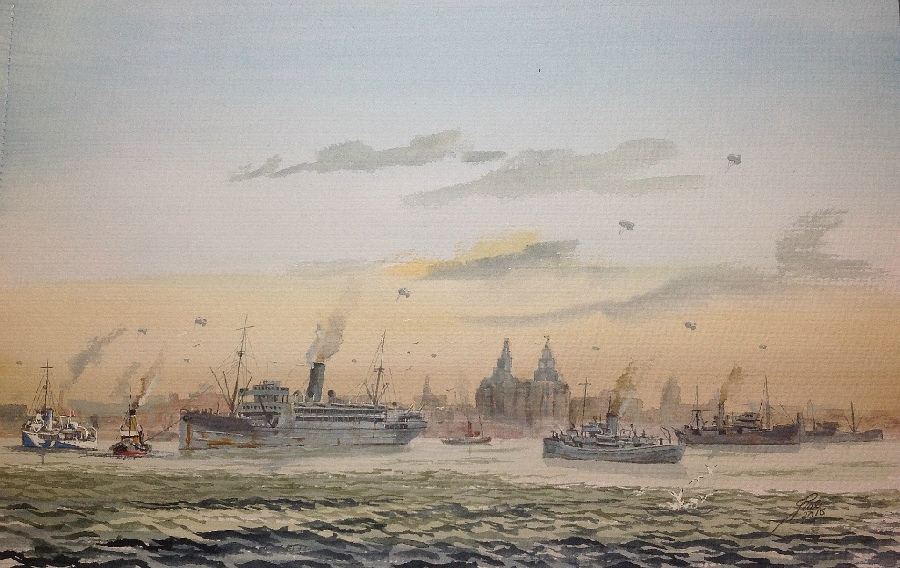
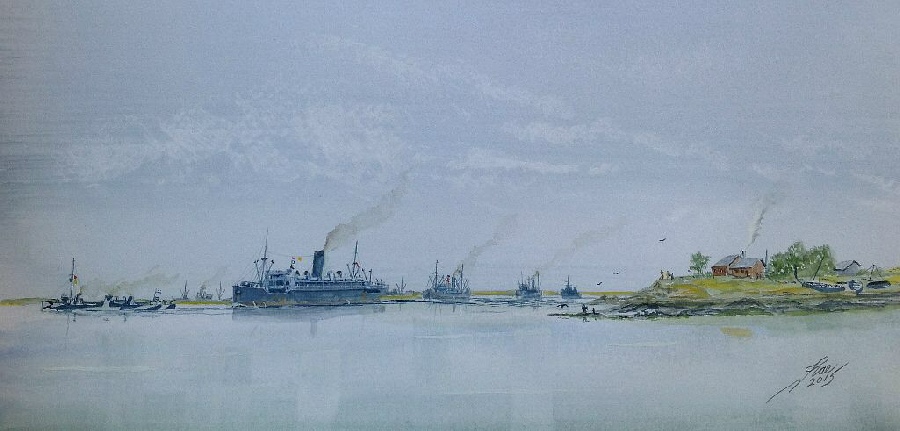
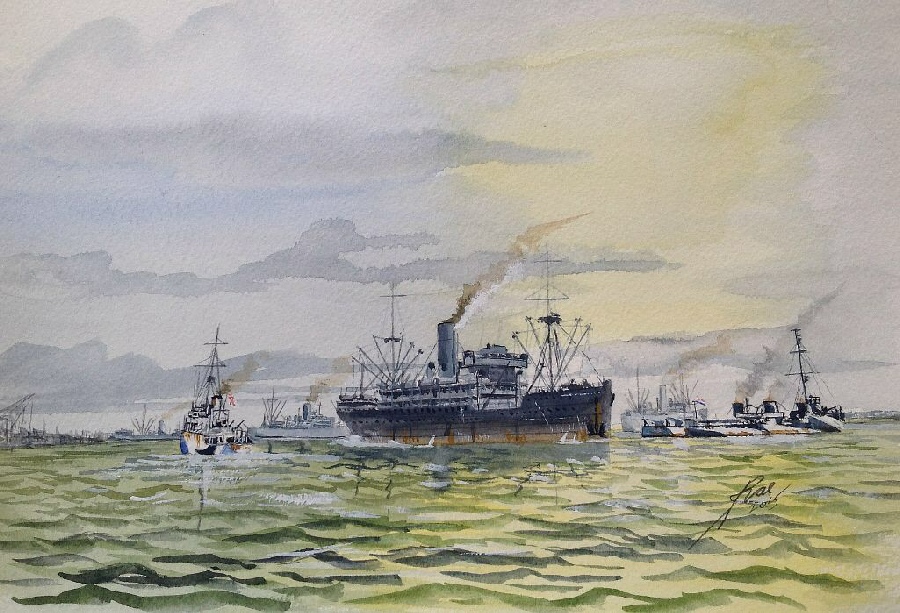
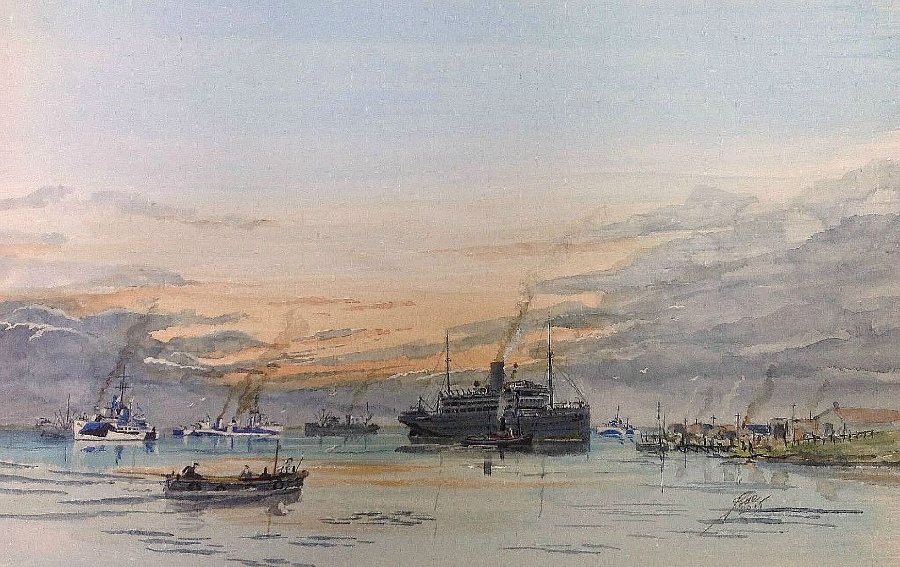
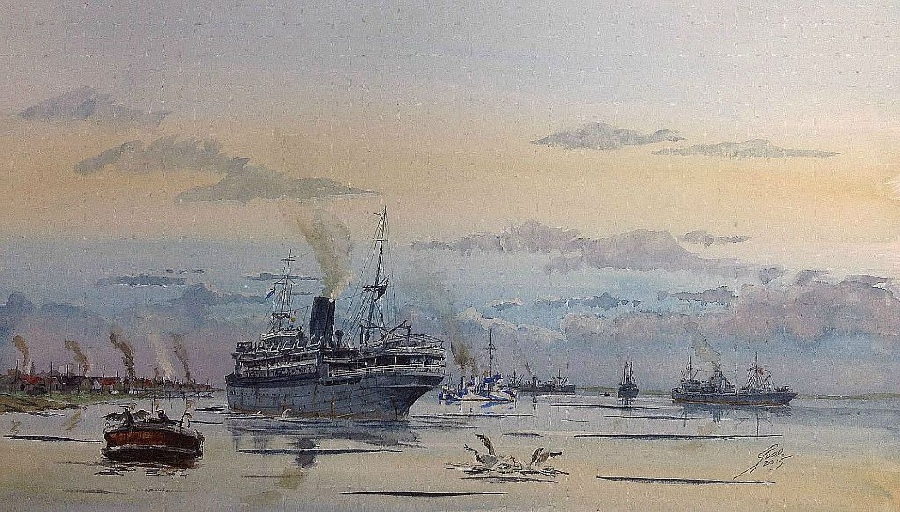
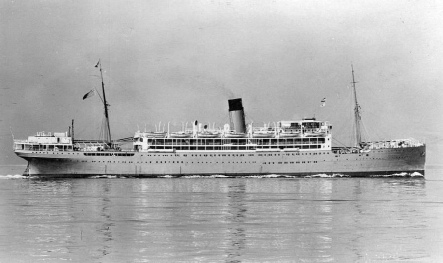
|
Port |
Arrived |
Sailed |
Comments |
|
Liverpool |
|
24-Aug |
|
|
Freetown |
07-Sep |
09-Sep |
|
|
Cape Town |
20-Sep |
21-Sep |
|
|
Durban |
24-Sep |
27-Sep |
|
|
Mombasa |
03-Oct |
06-Oct |
|
|
Durban |
12-Oct |
15-Oct |
|
|
Mombasa |
21-Oct |
22-Oct |
|
|
Durban |
29-Oct |
04-Nov |
|
|
Mombasa |
11-Nov |
12-Nov |
|
|
Durban |
18-Nov |
22-Nov |
|
|
Mombasa |
27-Nov |
28-Nov |
|
|
Durban |
04-Dec |
07-Dec |
|
|
Beira |
13-Dec |
14-Dec |
|
|
Lourenco Marques |
16-Dec |
17-Dec |
|
|
Cape Town |
20-Dec |
23-Dec |
|
Port |
Arrived |
Sailed |
Comments |
|
Freetown |
05-Jan |
07-Jan |
|
|
Clyde |
26-Jan |
17-Feb |
Engine and deck repairs |
|
Freetown |
05-Mar |
08-Mar |
|
|
Durban |
26-Mar |
31-Mar |
|
|
Suez |
20-Apr |
05-May |
|
|
Durban |
20-May |
27-May |
|
|
Cape Town |
31-May |
04-Jun |
|
|
Freetown |
|
27-Jun |
|
|
Greenock |
22-Jul |
02-Aug |
|
|
Liverpool |
02-Aug |
12-Aug |
Drydocking |
|
Scapa |
15-Aug |
|
|
|
Archangel |
03-Sep |
27-Sep |
|
|
Scapa |
11-Oct |
11-Oct |
|
|
Greenock |
13-Oct |
15-Oct |
|
|
Glasgow |
15-Oct |
19-Nov |
|
|
Greenock |
20-Nov |
|
Voyage repairs |
|
On Operations |
|
||
Port |
Arrived |
Sailed |
Comments |
|
Greenock |
16-Feb |
25-Feb |
|
|
Halifax |
08-Mar |
15-Mar |
|
|
Greenock |
26-Mar |
27-Mar |
|
|
Glasgow |
27-Mar |
20-Apr |
DEMS and voyage repairs |
|
Clyde |
20-Apr |
24-Apr |
|
|
Gibraltar |
30-Apr |
04-May |
|
|
Clyde |
11-May |
16-May |
|
|
Iceland |
20-May |
26-May |
|
|
Clyde |
29-May |
30-May |
Voyage repairs |
|
Glasgow |
30-May |
24-Jun |
|
|
Iceland |
27-Jun |
28-Jun |
|
|
Clyde |
01-Jul |
05-Jul |
|
|
Gibraltar |
12-Jul |
24-Jul |
|
|
Clyde |
30-Jul |
19-Aug |
|
|
Gibraltar |
26-Aug |
29-Aug |
|
|
Clyde |
08-Sep |
16-Sep |
|
|
Iceland |
19-Sep |
20-Sep |
|
|
Clyde |
23-Sep |
25-Sep |
|
|
Glasgow |
25-Sep |
16-Oct |
Drydocking and voyage repairs |
|
Clyde |
16-Oct |
19-Oct |
|
|
Gibraltar |
25-Oct |
12-Nov |
|
|
Clyde |
19-Nov |
21-Nov |
|
|
Glasgow |
21-Nov |
26-Nov |
Drydocking |
|
Clyde |
26-Nov |
28-Nov |
|
|
Gibraltar |
05-Dec |
07-Dec |
|
|
Bone |
|
11-Dec |
|
|
Algiers |
|
12-Dec |
|
|
Gibraltar |
14-Dec |
16-Dec |
|
|
Clyde |
23-Dec |
|
|
Port |
Arrived |
Sailed |
Comments |
|
Clyde |
|
22-Jan |
|
|
Glasgow |
22-Jan |
17-Mar |
General oevrhaul Drydocking Fumigation |
|
Clyde |
17-Mar |
26-Mar |
|
|
Freetown |
14-Apr |
29-Apr |
|
|
Takoradi |
04-May |
05-May |
|
|
Lagos |
06-May |
07-May |
|
|
Walvis Bay |
14-May |
14-May |
|
|
Cape Town |
17-May |
22-May |
|
|
Durban |
26-May |
30-May |
|
|
Mombasa |
10-Jun |
15-jun |
|
|
Colombo |
|
28-Jun |
|
|
Bombay |
02-Jul |
|
Overhaul and Drydocking carried out while vessel was employed as an Indian Navy Training Ship |
|
Port |
Arrived |
Sailed |
Comments |
|
Bombay |
|
04-Mar |
|
|
Colombo |
08-Mar |
22-Mar |
|
|
Bombay |
25-Mar |
28-Mar |
|
|
Colombo |
02-Apr |
08-Apr |
|
|
Bombay |
13-Apr |
25-Apr |
Voyage repairs |
|
Aden |
02-May |
03-May |
|
|
Suez |
08-May |
11-May |
|
|
Aden |
16-May |
19-May |
|
|
Bombay |
23-May |
20-Jun |
Drydock and voyage repairs |
|
Kilindini |
29-Jun |
11-Jul |
|
|
Colombo |
22-Jul |
28-Jul |
|
|
Bombay |
02-Aug |
12-Aug |
|
|
Kilindini |
21-Aug |
23-Sep |
|
|
Aden |
29-Sep |
29-Sep |
Minor repairs |
|
Suez |
04-Oct |
08-Oct |
|
|
Aden |
13-Oct |
14-Oct |
|
|
Kilindini |
21-Oct |
22-Oct |
|
|
Dar-es-Salaam |
23-Oct |
24-Oct |
|
|
Diego Suarez |
27-Oct |
|
|
|
Kilindini |
30-Oct |
31-Oct |
|
|
Mogadishu |
|
|
|
|
Kilindini |
05-Nov |
09-Nov |
|
|
Colombo |
19-Nov |
24-Nov |
|
|
Calcutta |
30-Nov |
|
Repairs and refitting for Naval Service |
|
Master |
From |
To |
|
W F Stanley |
2/1914 |
|
|
T Chope |
2/1914 |
8/1918 |
|
H Strong |
8/1918 |
12/1918 |
|
G W Armstrong |
12/1918 |
6/1919 |
|
J George |
6/1919 |
7/1920 |
|
L A Millard |
7/1920 |
6/1921 |
|
W F Stanley |
6/1921 |
2/1922 |
|
A S Knight |
3/1922 |
6/1922 |
|
T M Lang |
10/1922 |
11/1922 |
|
D Samuel |
11/1922 |
8/1923 |
|
T H Wilford |
9/1923 |
4/1924 |
|
E F Gilbert |
5/1924 |
8/1924 |
|
S H Owen |
9/1924 |
12/1924 |
|
G F Gardner |
10/1926 |
5/1927 |
|
J Attwood |
6/1927 |
9/1927 |
|
E F Gilbert |
10/1927 |
1/1928 |
|
C E Stuart |
1/1928 |
4/1928 |
|
H B Harvey |
4/1928 |
7/1928 |
|
G J Whitfield |
8/1928 |
10/1929 |
|
D Nicoll |
10/1929 |
12/1929 |
|
Laid up |
||
|
C R Jackson |
4/1930 |
10/1930 |
|
B Ray |
10/1930 |
11/1930 |
|
C R Bickford |
11/1930 |
6/1932 |
|
J McMahon |
1/1932 |
|
|
C E Aylen |
7/1932 |
9/1932 |
|
C R Bickford |
10/1932 |
4/1933 |
|
J McMahon |
5/1933 |
8/1933 |
|
W Weller |
8/1933 |
9/1935 |
|
E H Thornton |
9/1934 |
|
|
B Ray |
10/1935 |
11/1937 |
|
C F Marriner |
11/1936 |
|
|
E E Spradbrow |
12/1937 |
5/1938 |
|
R C Harris |
6/1938 |
2/1939 |
|
Refit |
||
|
J C Brown |
7/1939 |
8/1940 |
|
W Pace |
10/1939 |
12/1939 |
|
T W McAllen |
8/1940 |
8/1941 |
|
W D Roach |
8/1941 |
10/1941 |
|
M H Williams |
11/1941 |
9/1942 |
|
C Gorringe |
9/1942 |
4/1945 |
|
J F Oakley |
19/1942 |
|
|
Royal Indian Navy |
||
|
Refit |
||
|
J A Sowden |
8/1947 |
12/1947 |
|
J F Oakley |
12/1947 |
3/1948 |
|
|
5/1949 |
7/1949 |
|
J E Wilford |
3/1950 |
3/1952 |
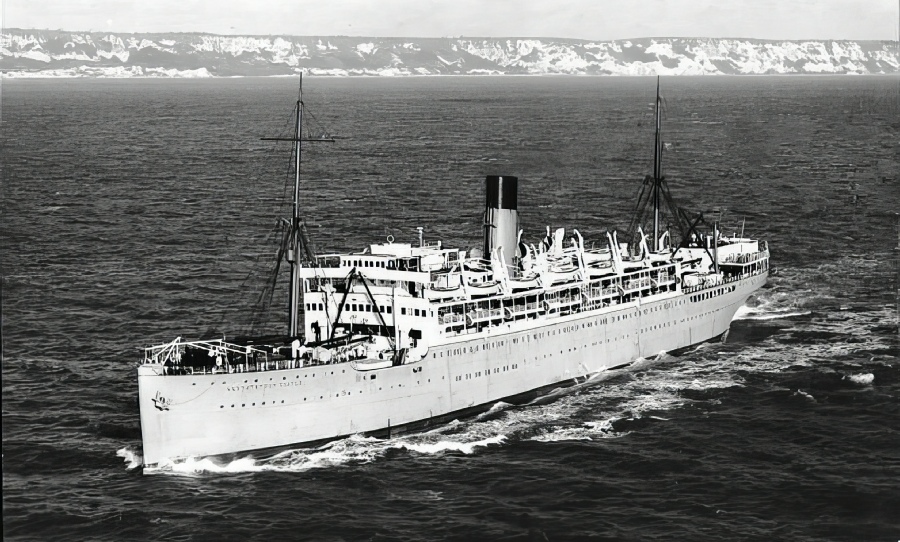
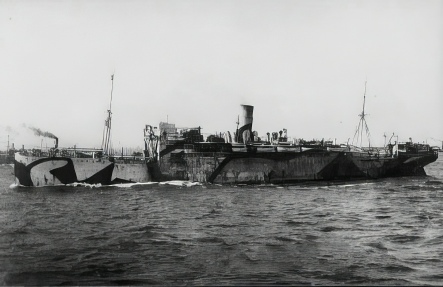
|
Vessel |
Built |
Tonnage |
Official No |
Ship Builder |
Engine Builder |
Engine Type |
HP |
Screws |
|
Llanstephan Castle |
1914 |
11423 |
135315 |
Fairfield Glasgow |
Fairfield Glasgow |
2 x Quadruple Expansion Steam |
5800 IHP |
2 |

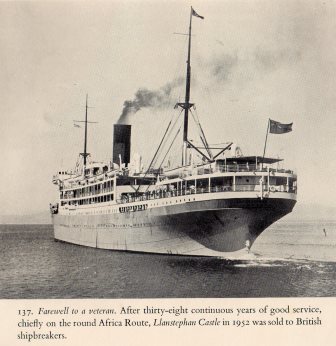 As I prepare these notes, my Union Castle Chronicle is open to page 372 and photo #137 headed “Farewell to a Veteran” shows the Stephan en route from London to South Wales. A fond memory indeed!
As I prepare these notes, my Union Castle Chronicle is open to page 372 and photo #137 headed “Farewell to a Veteran” shows the Stephan en route from London to South Wales. A fond memory indeed!


